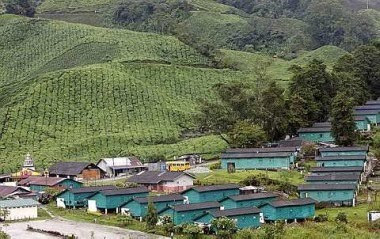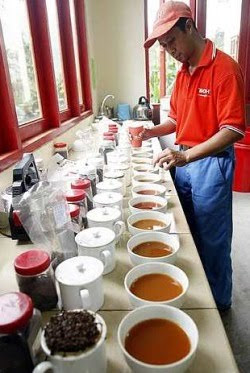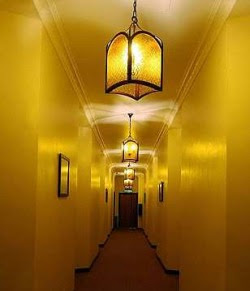By Ivan Loh
23/Dec/2009
CAMERON HIGHLANDS: Enforcement officers demolished the sheds covering four vegetable farms built in the buffer zone of reserved land near Sungai Terla.
It was not a smooth operation with the farmers screaming and crying aloud as Rela personnel held them aside. Reporters who had gathered there were also yelled at.
The distraught farmers even tore down a bridge across the river to prevent the enforcement personnel from getting to the farms.
District Officer Datuk Mohamad Noor Abdul Rani said action was taken as the plots were too near the riverside, with pesticides and fertilisers seeping into the river.
He said plastic bags and pesticide containers were also dumped near the river.
Mohamad Noor said the ruling was that farms should be at least 10m away from rivers.
"The river is the intake point to a reservoir in Cameron Highlands. Tests conducted on the water quality by the Health Department recently showed that it was unsatisfactory," he told a press conference after the demolition work.
He assured that the water could still be treated and would be safe for consumption, adding that another seven farms there would be monitored by the Pahang Drainage and Irrigation Department until new directives to clear the farms were given.
Mohamad Noor said all 11 farmers have had their Temporary Occupancy Licences revoked for encroaching into the reserved land.
He said the issue only came to their attention following a TV programme that highlighted the pollution caused by the farmers.
"The farmers already know that they will not get any compensation because they have encroached onto reserved land. But they can still appeal to the Pahang government for land to continue farming," he added.
Tanah Rata assemblyman Ho Yip Kap pledged to raise the matter with state officials to help the affected farmers. -- The Star
Chaos as vegetable farms near river are demolished
By Ivan Loh
24/Dec/2009
CAMERON HIGHLANDS: Enforcement officers demolished sheds covering four vegetable plots in the buffer zone of a reserve land near Sungai Terla.
It was not a smooth operation, however. The farmers were screaming and crying aloud as Rela personnel held them down. Reporters who had gathered there were also yelled at.
The farmers even tried to tear down a bridge across the river to prevent the enforcement personnel from getting to the farms.
District Officer Datuk Mohamad Noor Abdul Rani said action was taken as the plots were too near the riverside, with pesticides and fertiliser seeping into the river.

Total disarray: A woman crying as Rela members restrain her husband after they were overcome by emotion when their farm in Kuala Terla was demolished by Cameron Highlands district office enforcement officers yesterday. – Saiful Bahri / The Star
He said plastic bags and pesticide containers were also dumped near the river.
Mohamad Noor said the ruling was that farms should be at least 10m away from rivers. "The river is the intake point to a reservoir in Cameron Highlands. Tests conducted on the water quality by the Health Department recently showed that it was unsatisfactory," he told a press conference after the demolition work.
He gave an assurance that the water could still be treated and would be safe for consumption.
Mohamad Noor said all 11 farmers have had their Temporary Occupancy Licences revoked due to the encroachment into the reserve land.
He said the issue only came to their attention after a TV programme that highlighted the pollution caused by the farmers.
"The farmers already know that they will not get any compensation because they have encroached onto reserve land. But they can still appeal to the Pahang government for land to continue farming," he added.
Tanah Rata assemblyman Ho Yip Kap pledged to raise the matter with state officials to help the affected farmers. -- The Star























